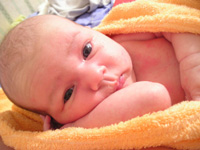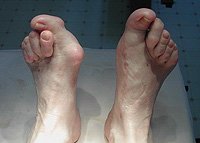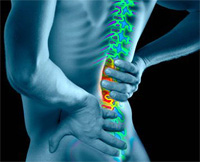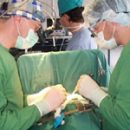Many people are not without reason are afraid of any surgical interventions, it is a common or local anesthesia. If the operations can not be avoided, then you need to prepare. What sensations is experiencing a postoperative patient? What is the norm, and then complication?
Content
Features anesthesia
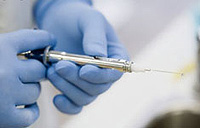 As already mentioned, the operations about the Valgus deformation of the thumb of the foot are performed under local anesthesia. This means that the patient during the operation is conscious. Local anesthetics are used for anesthesia: Novocaine, Lidocaine, Markain, Buupivacaine and others.
As already mentioned, the operations about the Valgus deformation of the thumb of the foot are performed under local anesthesia. This means that the patient during the operation is conscious. Local anesthetics are used for anesthesia: Novocaine, Lidocaine, Markain, Buupivacaine and others.
However, at the discretion of the anesthesiologist and the most patient, another anesthesia method can be selected: spinal, intravenous, endotracheal.
Contraindications to these methods of anesthesia are practically no, the only thing that can limit the use of some of them – These are purulent and inflammatory diseases in the field of alleged intervention. Age is also not any obstacle.
Most often, conductor anesthesia (anesthesia of nerves, manageing this area responsible for the feeling in this area) is carried out. In this case, anesthetic solution is introduced into the location of the nerves, which are responsible for the sensitivity of the foot. For this, the doctor introduces a solution in the field of ankle joint, where these nerves are shallow. Anesthesia occurs after 5 – 10 minutes. After entering the solution, the anesthetic at the beginning can be felt lightly tingling and the feeling of heat in the foot.
Postoperative period
After the operation, anesthesia will still last some time – half an hour, maximum hour. Gradually its action will pass. Therefore, analgesics are usually required for anesthesia after surgery – For example, ordinary analgin or any other drugs.
The postoperative period can usually take from 6 weeks to 6 months, which depends on the complexity of the operation. The complete restoration of the function of the Plus Snophalangeal joint occurs within 1 year.
Metal knitting needles fixing bone fragments are usually removed after 3 – 4 weeks. Seams are removed after 1 – 3 weeks. In the postoperative period, wearing a wearing of a rake or special orthopedic shoes. Conventional shoes can be worn through 5 – 6 weeks. After 8 – 9 weeks Patient may return to its usual physical activity.
Complications and consequences of the operation on the Valgus deformation of the thumb
Complications are characteristic of all operations, including for operations in the foot. Most often to such complications include:
-
Infectious complications from soft tissues – They manifest themselves pain in the postoperative wound, redness and swelling. If the infection affects the bone (which usually occurs during the operation, or after the transition of infection with soft tissues to the bone), then such a state occurs as osteomyelitis. This is inflammation of the bone. The prevention of infectious complications is to comply with the asepsis and antiseptics during the operation, as well as in complying with the right care for the wound after the operation. If such complications occur, the doctor prescribes antibiotics. With a more severe course of the infectious process (especially with the development of osteomyelitis), it is necessary to resort to re-operational intervention.
-
Bleeding. This complication may usually occur during operation, for example, when damaged the blood vessel.
-
Slow fusion of bone fragments after dissection. Such a complication is often associated with other concomitant diseases in the patient, as well as with a violation of normal metabolism in bone tissue. For an accelerated instance of bone fragments, it is recommended to introduce dairy products (cheese, cottage cheese), as well as meat and vitamins (fruits and vegetables).
-
Displacement of bone fragments. The cause of this complication may be either defective fixation of fragments during operation, or traumatization of the foot by the patient (for example, physical load on the foot in the early postoperative period).
Side Effects of Local Anesthesia
These include usually:
- Allergic reactions (most often for novocaine) and they usually arise immediately after the introduction of anesthetic.
- Skin numbness in the area of the cut, a feeling of burning and tingling. This is due to the damage to the nervous sprigs that go into the thickness of the skin.
- Shortening of the thumb on excision fragment Falangi.
- Degenerative disease of the joint (arthrosis) or the so-called avascular necrosis after surgery associated with circulatory impairment in the joint.
- Outlet of the soles of the foot



